AGM-88B HARM
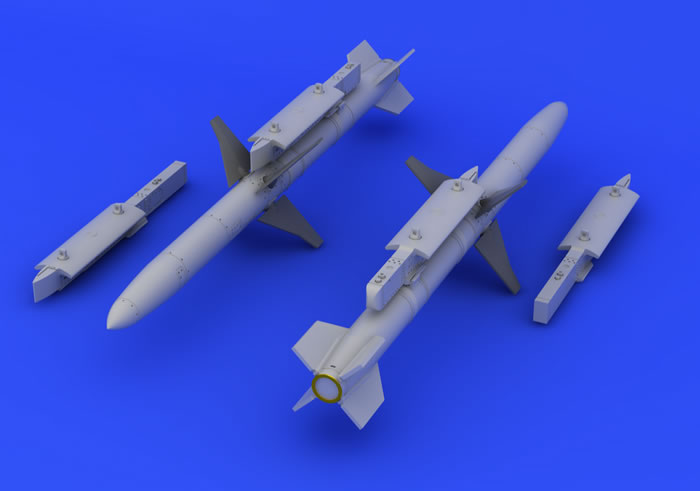
(CAD illustration courtesy of Eduard website)
Eduard BRASSIN, 1/48 scale
S u m m a r y : |
Catalogue Number |
Eduard BRASSIN Item No. 648 180 – AGM-88B HARM |
Contents and media |
Eight resin parts, a PE fret of four pieces & decals . |
Scale |
1/48 |
Price: |
US14.95 or US12.71 for BFC Members plus shipping, available online from Eduard
|
Review Type |
First Look |
Advantages: |
High quality resin HARM's with an impressive finish and logical parts breakdown. |
Disadvantages: |
None noted. |
Recommendation: |
Very nice rendition of the HARM from Eduard, with the very high level of definition in casting and accuracy of reproduction in scale that has become the norm for the Brassin range.
Highly Recommended |
Reviewed by Marcus Thornley

Eduard's BRASSIN 1/48 HARM is available online from Squadron.com
The AGM-88 High-speed Anti-Radiation Missile (HARM) is a tactical, air-to-surface missile designed to home in on electronic transmissions coming from surface-to-air radar systems
Source: Wikipedia.
Thirty years will soon have past since the AGM-88 HARM was first used in combat. In that time it has become one of the prime pieces of ordinance in the SEAD/DEAD mission for the armed forces that field it.
It comes as no surprise then, that modellers are hanging them under the wings and fuselages of their builds. Now Eduard have brought their considerable skills to bear on this weapon system.
The resin missile set as supplied comes in Eduards standard blister pack. Their are parts for two missiles. One piece resin missile bodies with resin control fins and PE rings for the motor section. Twice as many of these PE parts as required are provided so you will have spares in case they are required.
There are four launch rails in two different types supplied, no statement is made on the differences between the two types although it can be seen that the rear extension behind the sway brace mounts are different lengths. I consider it likely that they represent the US Navy LAU-118(V)1/A & the longer US Air Force LAU-118(V)2/A . Reading the globalsecurity.org page here explains the launchers more fully.
The resin itself is wonderful. It has a smooth finish with no air bubbles or imperfections noticeable. The details of the missiles whether shown proud or in relief are of the highest standard. Indeed heavy handed application during the painting stage could render some of the finer section lines and fastener details invisible. The attachment points to the casting blocks are in logical places and it should prove a matter of only due care and attention, not luck, to cleanly separate all pieces prior to painting and assembly.
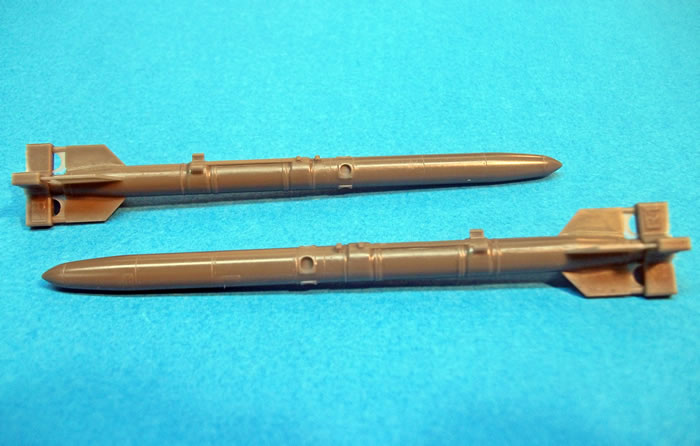
After a brief comparison with the HARM's provided by Hasegawa in their EA-18G Growler kit and in their X48-3 Aircraft Weapons:C set. It is clear these are the stand out missiles of the two in my mind. Firstly for the above stated reason of the beautiful moulding quality, secondly the control fins, mounted at mid body they have commendably fine leading and trailing edges so that the change in section through the fin is obvious without being overly pronounced. Finally a one piece missile body is provided, that can be painted and have markings applied before fitting the fins. An elegantly simple assembly process.
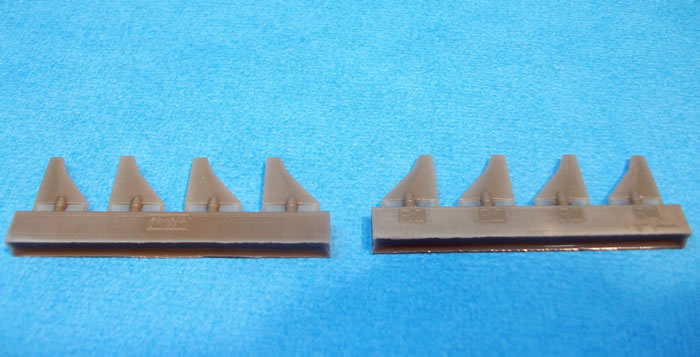
The launch rails themselves are worthy of mention as they are a stand out piece in appearance and compliment the missiles perfectly. In comparison with those injected items in the Hasegawa kits they are on all counts superior, in their shadow the Hasegawa parts look flat and uninspired.
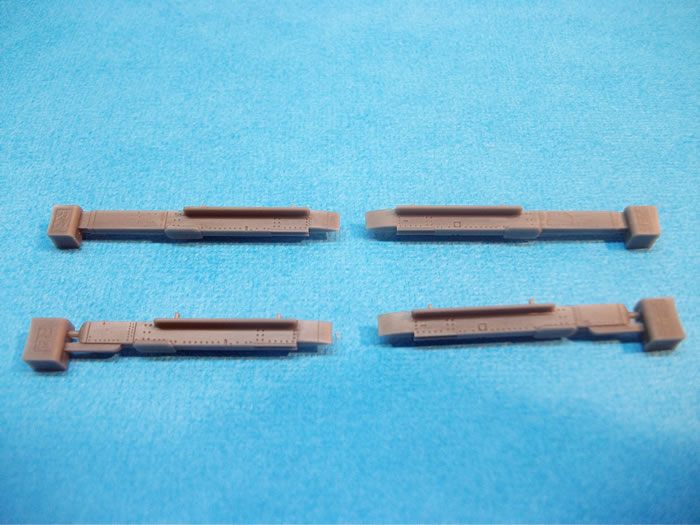
If there is an area that may not stand up to the 1/1 scale missile it is in the rocket motor nozzle. The actual nozzle is in relief with a nozzle cap fitted across the motor opening whereas the kit builds the area up using a ring of PE on the tail section that you will have cleaned up after separation from the casting block. It is only a small detail but there it is and you are provided with extra PE pieces to get the finish just right on your missile if you are not happy with your initial attempt.
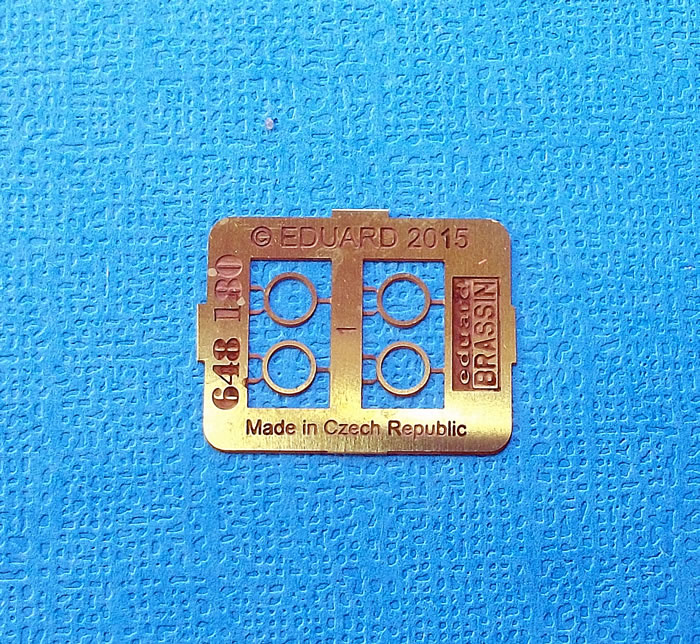
Decals and an instruction sheet are provided. The decals, mostly stencil markings, on a small sheet are well printed with good colour and register. The decals represent a missile with an active warhead and rocket motor, so a 'live' missile. Most notably by the yellow warhead and brown rocket motor stripes. Painting the blue inert markings or seeking alternate decals would be required should you wish to depict an inert or training missile.
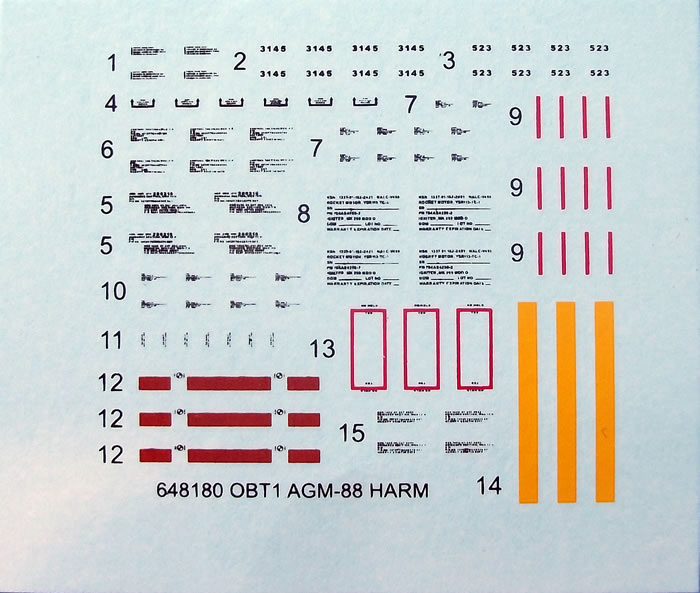
The instructions are in standard Eduard Brassin format. Forming the backing card in the blister pack they are a single A5 size sheet folded once. Printed in colour they clearly and concisely detail the assembly, painting and decal placement for the missiles. Colour call outs are only for the Gsi Creos (Gunze) and Mr Metal paint ranges and require only white and aluminium. If you do not have this range of paint available to you easy substitutions can be made with your brand of choice.
I would suggest you check the references for the aircraft you are modelling as the instructions do call for the launch rails to be painted aluminium. In pictures I have seen showing HARMs slung under the F-16 the launch rail appears to be painted in an FS grey. So please do your own checking on aircraft and era.
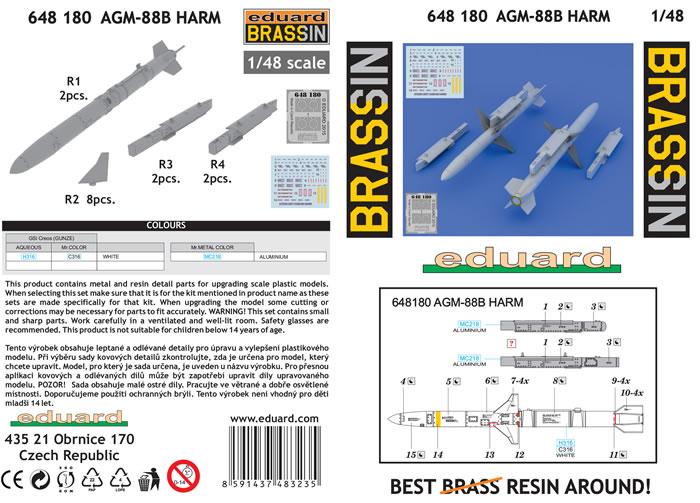
This is a very nice piece of work on Eduards part.
With the very high standards expected from manufacturers today this kit fulfils them, it is not attempting to be class leading accessory, it is one.
The high point for me being the detailed finish that is achievable from such a simple logical parts breakdown.
Recommended.
Thanks to Eduard for the samples and images.
Review Text Copyright © 2015 by Marcus Thornley
Page Created 12 May, 2015
Last updated
12 May, 2015
Back to HyperScale Main Page
Back to Reviews Page

|
